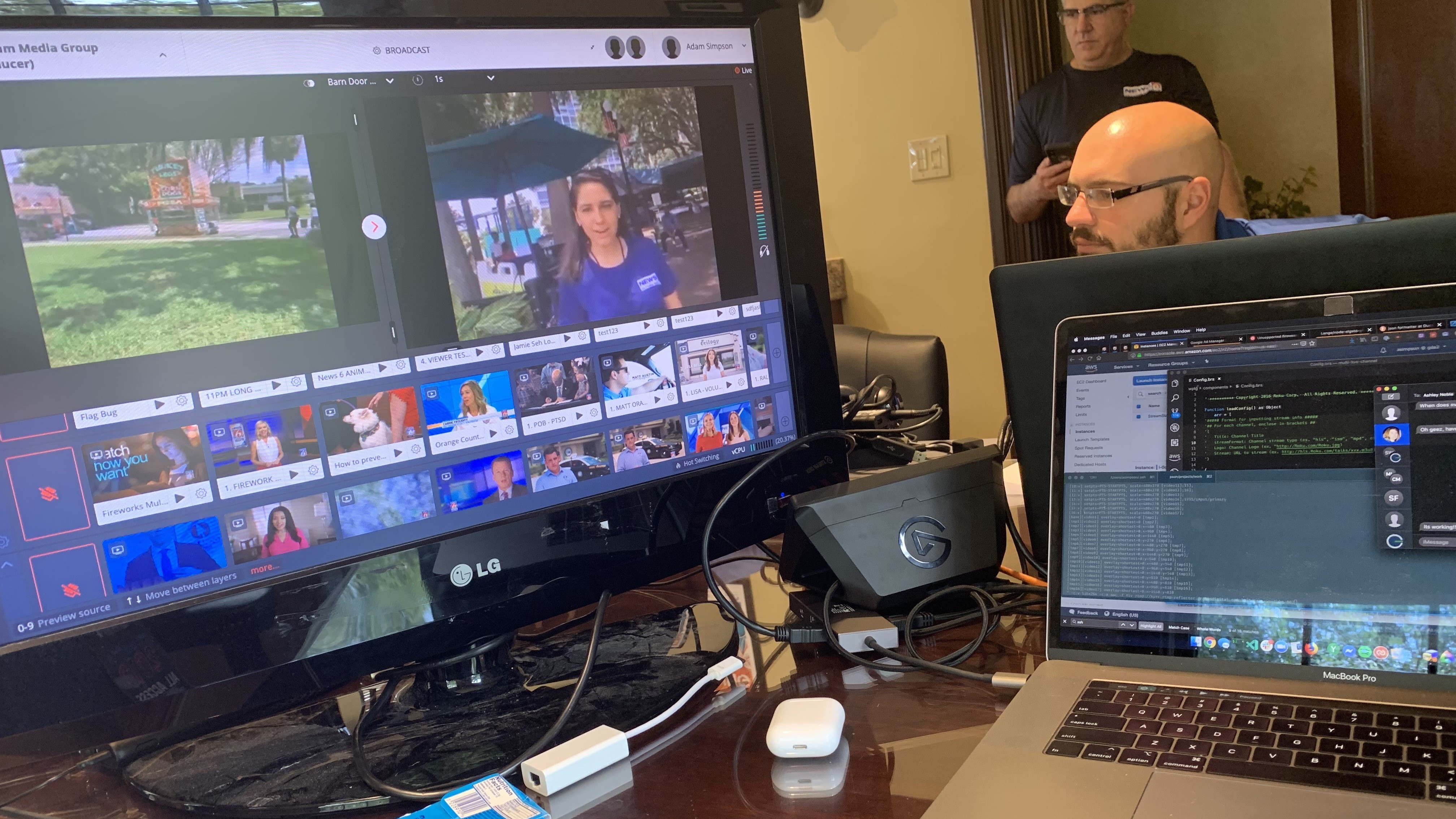AWS Takes Graham’s News Channel Production from Ground to Cloud
A number of AWS platforms power Graham Media Group stations’ 24/7 news coverage

DETROIT—Between the 24-hour news cycle, abundance of social media platforms and proliferation of digital technology, the delivery of information is nonstop. From significant current events to live entertainment to a friend sharing their daily activities, a wide range of content is available at the consumer’s fingertips at all hours of the day via the simple click of a button.
With so much content readily accessible, and so many audio and video streaming platforms, it’s vital for broadcasters to develop a digital delivery strategy that can cut through the noise to capture the audience’s attention and keep them up to speed, and also generate ad revenue. As we’ve experienced at Graham Digital—a Graham Media Group (GMG) team serving seven GMG stations throughout the U.S.—this requires a highly efficient production and delivery workflow and a deep understanding of digital platforms.
To keep pace with the proliferation of OTT content, we’ve built 24/7 live OTT news channels for each of Graham Media Group’s seven stations that play a combination of live and pre-recorded content. Earlier this year, we were looking to revamp our monetization strategy and gain centralized control of these channels and found our solution in the cloud.
Having worked with Amazon Web Services (AWS) on a number of projects, we knew they’d be the ideal partner to help transform the majority of our media workload for these channels from on-premises to the cloud. Today, our control and distribution pipeline for these channels includes AWS Elemental MediaLive for broadcast-grade video processing, AWS Elemental MediaStore for live content ingest and origination, AWS Service Manager for remote management of the Elemental Live encoders, AWS Fargate to run applications for SCTE35 monitoring and, through programing data, content aware input switching for MediaLive and finally Amazon CloudFront for content delivery.
Switching from the ground to the cloud has given us the flexibility to drive all of these channels remotely, from live switching to dynamic ad insertion, which has proven essential to operations this year. With AWS Media Services powering centralized control of the workflow for all seven 24/7 content channels, our stations no longer have to manage their individual channels or the hardware driving them. The cloud-based infrastructure and live switching for each channel is all centrally managed here in Detroit in the Graham Digital office, or in the case of the last few months, by our team members working from home.
Making the switch from on-prem to cloud was ideal, and the beauty of it is that we’re no longer constrained by the local on-premises network and disparate control, so we can manage these channels from virtually anywhere we can get an internet connection. We can easily scale to meet the needs of each station and its audience to ensure the delivery of high-quality video. It’s made the transition to working from home much easier across our teams and stations and is opening up new opportunities to move even more of our workflow into the cloud, such as editing.
Part of the decision to use AWS also came out of a need to enhance our management and monetization strategy for each channel. With AWS Elemental Live, we can contribute 35 markers from on-premises encoders to AWS Media Live, and use a combination of station programming and the ad markers available in the HLS stream. Leveraging our existing ad platform, this workflow allows us to bring viewers more personalized content at a broadcast quality caliber, while automated reporting allows us to better measure ad impressions and viewer behaviors. It’s been a huge boon to our monetization strategy.
The media landscape is constantly evolving, and we’re confident that by tapping into AWS services in the cloud, we’ll be able to innovate more rapidly to improve the audience experience as new trends emerge and better monetize our content, while streamlining operations behind the scenes.
Adam Simpson is the DevOps lead for Graham Media Group.
Get the TV Tech Newsletter
The professional video industry's #1 source for news, trends and product and tech information. Sign up below.
